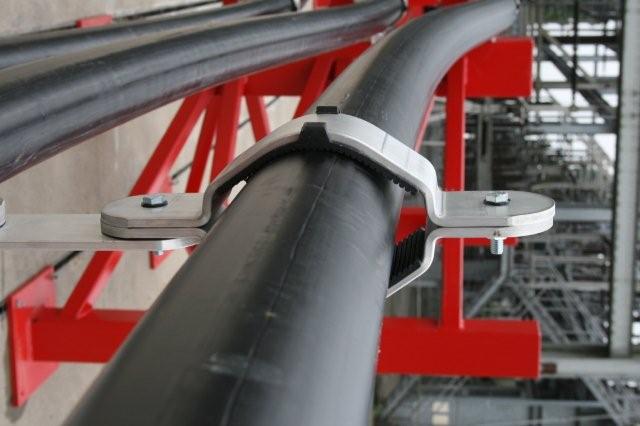The high voltage system consist of generators, cables for power distribution, transformers, switch gear, and consumers. Here, consumers are large electric motors for propulsion, air conditioning compressors, bow thrusters, etc. Insulation resistance is the key parameter which gives the general condition of an electrical equipment. First of all, make sure IR values are to be checked between phases and between phases and earth periodically. In addition, these IR values are recorded for future references. Also, high voltage equipments are normally designed for a useful insulation life of 20 years and more. Hence proper operation within rated power, temperature and timely maintenance ensure prolonged life of the equipment.
In high voltage system, insulation resistance is measured using a 5000 volt DC megger, for voltages upto 6.6 kV. Furthermore, insulation resistance is measured under following conditions.
· Routines test as per planned maintenance system (PMS)
· After a major repair of the equipment, and
· Troubleshooting purposes
What is the procedure / precautions for measuring insulation resistance of a high voltage equipment ?
· First of all, disconnect the power supply to the high voltage (HV) equipment by opening circuit breaker and opening isolator.
· In addition, confirm that all the phases are dead using an approved live line tester. Also make sure to check the live line tester for proper functioning using the testing tool provided along with the same.
· Close the earthing switch now and make sure all the conductors are earthed.
· Now connect the insulation resistance (IR) tester to the conductor, with safety earth connection ON. This is to ensure that the operator is not in contact with any unearthed conductor during insulation resistance (IR) measurement.
· After connecting insulation resistance (IR) tester to the circuit, safety earth is to be disconnected.
· Now insulation resistance (IR) test is applied and recorded.
· After completion of the testing, safety earth is to be reconnected.
· Now disconnect the insulation resistance (IR) tester from the circuit.
· This safety measure to be followed for each separate IR test.
Why normal insulation resistance (IR) values are unreliable for high voltage machinery ?
· IR values taken for a machinery at different temperatures are unreliable, especially when the temperature difference is more than 10 °C.
· Also for high voltage system, it takes to stabilise the IR values. So instantaneous readings may lead to false interpretations.
What is meant by Polarization Index (PI) ?
· Polarization Index (PI) value is the ratio between the insulation resistance (IR) value measured after the application of the test voltage continuously for 10 minutes to the IR value measured after 1 minute of application.
· PI = (IR value after 10 minutes) / (IR value after 1 minute)
· PI readings are less sensitive to changes in temperatures.
· It will take some time for leakage currents while IR testing to attain saturation, hence reading is taken after 10 minutes.
· PI value of 2 or more is considered as satisfactory. If the PI value is less than 1.5, equipment to be used only after improving PI value.
· An electronic merger tester is essential for PI test. Because hand driven merger testers will not be able to give the steady test voltage for long time.
Why it is necessary to measure bolted bus bar joint resistance ?
· High current flows through the bus bar. Any resistance in the bus bar cause resistive heating (I²R heating).
· Same situation is applicable for any joints in the circuit.
· This resistive heating produces hot spots or over heated areas. It is unsafe and may gradually reduce useful life time of the equipment.
How to measure bolted bus bar joint resistance ?
· A normal ohm meter only drives small milli ampere (mA) current through the circuit. So it is not desired for measuring bolted busbar joint resistance.
· Special low resistance micro ohm meter (also known as ducter) is normally used for measurement.
· A calibrated current is allowed to pass through the circuit (say 10 Amps). Also the voltage drop across the circuit is measured. Hence resistance can be measured from the formula, R = V / I
· For a healthy bus bar, joint resistance is about few milli ohms (mΩ).
How the hot spots in the bus bars or surrounding area is checked ?
· It is necessary to keep the system running live to analyse any hot spots.
· A recording infra red camera can take thermal images of different parts of the system from a safe distance.
· These thermal images are processed in a computer program to display hot spots and temperature variations.

